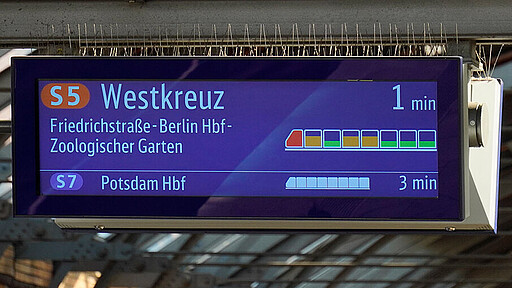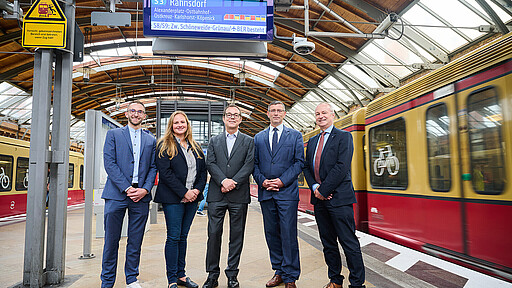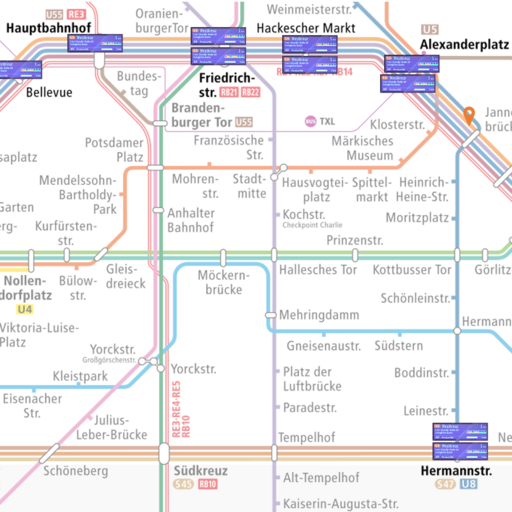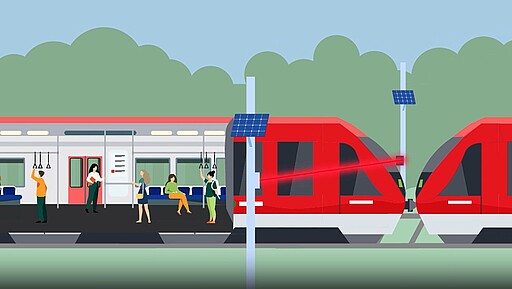How busy is my train?
Find your ideal boarding point before your S-Bahn train arrives at the platform.
Since 24 September, you have been able to see how full your S-Bahn is and where there is still room before boarding at selected pilot stations. This is made possible by a new technology called "Lightgate", which uses special light sensors.
Our light sensors measure the capacity of the S-Bahn carriages in real time and display this directly on the train destination displays on the platform: Green stands for a carriage with plenty of space, yellow for medium capacity, red means the carriage is already very full.
These six stations are taking part:
For test purposes, the S-Bahn has installed ten sensors between Jannowitzbrücke and Hauptbahnhof and between Tempelhof and Neukölln.
They provide real-time capacity data for trains arriving from both directions at Alexanderplatz, Hackescher Markt, Friedrichstraße and Hermannstraße stations as well as for westbound trains at Bellevue and Hauptbahnhof.
How does "Lightgate" work?
To measure capacity utilisation, S-Bahn Berlin uses a technology that was developed by S-Bahn Hamburg and is already being used successfully there.
The "Lightgate" sensor is a light barrier in the track area that scans the passing train with barely visible light. As less and less light penetrates through the windows as patronage increases, it is possible to measure how full the train is. The intelligent sensor can also recognise the number of carriages, the train production series and the speed of the train in addition to the occupancy rate.
The real-time capacity utilisation per carriage is then transmitted wirelessly to the electronic train displays on the platform of the next S-Bahn station.
Further advantages for you:
As a passenger, you benefit from the real-time capacity monitoring in several ways: in addition to displaying the information directly on the platform, the data also provides valuable insights into how busy individual trains are at certain times. This enables even better passenger information within our VBB network, as the timetable information can direct passengers to less busy connections
Based on this real-time capacity data, our bus replacement services can also be better planned in future, as our S-Bahn services in general.
Photo gallery: "Lightgate" in action
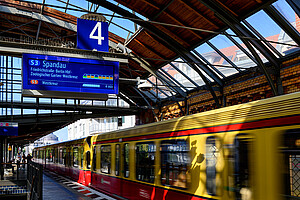
Project "Lightgate"
S-Bahn Berlin pilot project - light sensor shows passengers how much space is available on the train.
- ©
- Deutsche Bahn AG / Heye Jensen
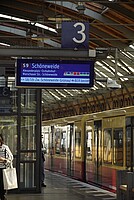
Project "Lightgate"
S-Bahn Berlin pilot project - light sensor shows passengers how much space is available on the train.
- ©
- Tom Hartung
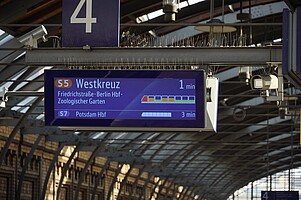
Project "Lightgate"
S-Bahn Berlin pilot project - light sensor shows passengers how much space is available on the train.
- ©
- Tom Hartung
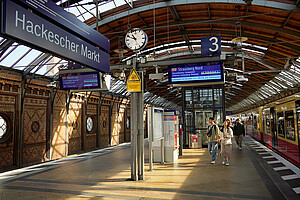
Projekt "Lightgate"
S-Bahn Berlin pilot project - light sensor shows passengers how much space is available on the train.
- ©
- Tom Hartung
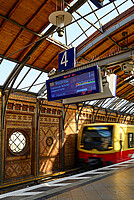
Project "Lightgate"
S-Bahn Berlin pilot project - light sensor shows passengers how much space is available on the train.
- ©
- Deutsche Bahn AG / Heye Jensen
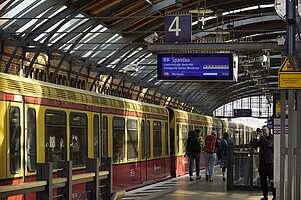
Project "Lightgate"
S-Bahn Berlin pilot project - light sensor shows passengers how much space is available on the train.
- ©
- Tom Hartung
Know how full the train is before it arrives!
Deutsche Bahn and the states of Berlin and Brandenburg are investing around 900,000 euros in the "Lightgate" pilot project, which is scheduled to run for several years. The project partners are continuously checking the reliability of the data and which sections of track are suitable for further "Lightgate" sensors.
"Lightgate" is being tested by us in close cooperation with the Verkehrsverbund Berlin-Brandenburg and as part of the SAFIRA project, which is researching passenger information and passenger guidance based on capacity utilisation data.
